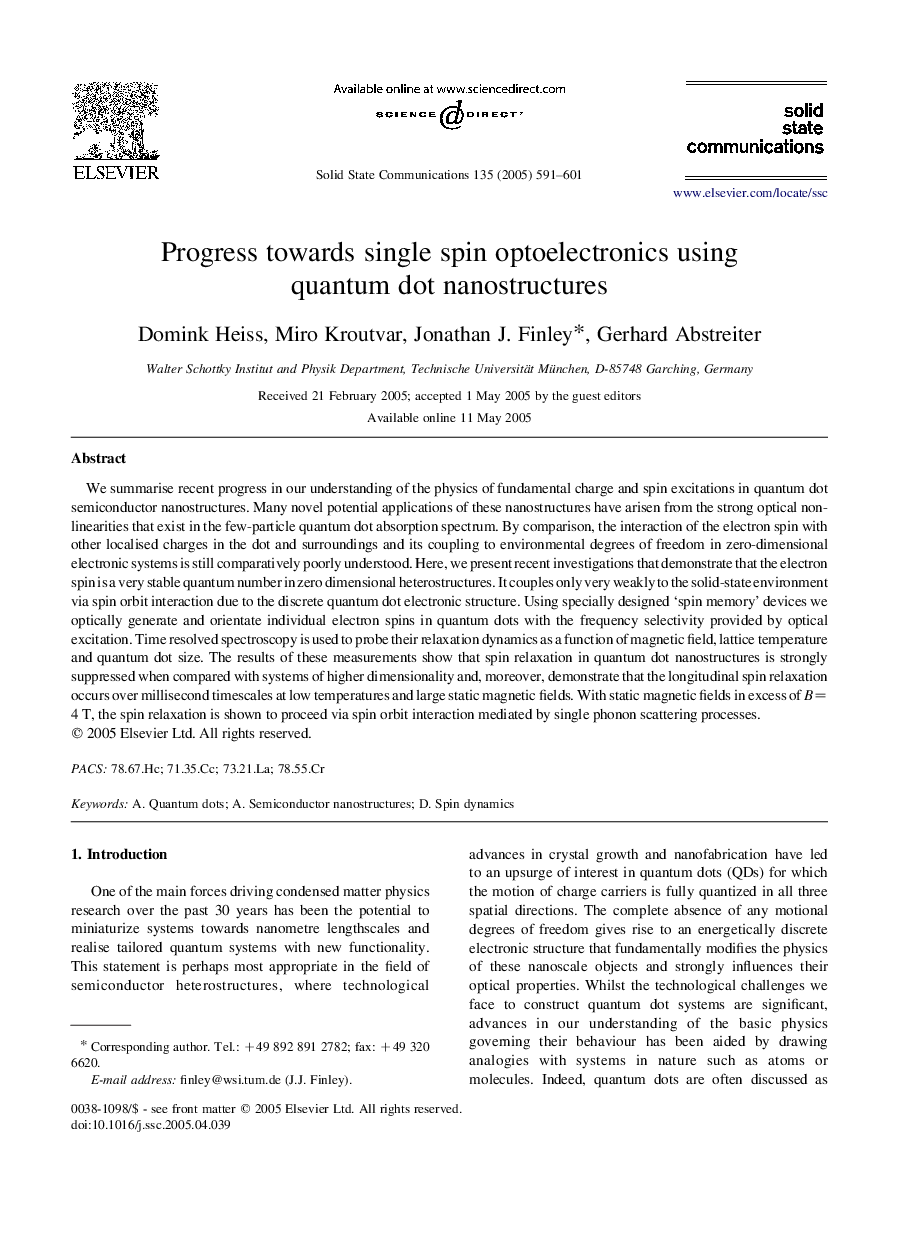| Article ID | Journal | Published Year | Pages | File Type |
|---|---|---|---|---|
| 9801933 | Solid State Communications | 2005 | 11 Pages |
Abstract
We summarise recent progress in our understanding of the physics of fundamental charge and spin excitations in quantum dot semiconductor nanostructures. Many novel potential applications of these nanostructures have arisen from the strong optical non-linearities that exist in the few-particle quantum dot absorption spectrum. By comparison, the interaction of the electron spin with other localised charges in the dot and surroundings and its coupling to environmental degrees of freedom in zero-dimensional electronic systems is still comparatively poorly understood. Here, we present recent investigations that demonstrate that the electron spin is a very stable quantum number in zero dimensional heterostructures. It couples only very weakly to the solid-state environment via spin orbit interaction due to the discrete quantum dot electronic structure. Using specially designed 'spin memory' devices we optically generate and orientate individual electron spins in quantum dots with the frequency selectivity provided by optical excitation. Time resolved spectroscopy is used to probe their relaxation dynamics as a function of magnetic field, lattice temperature and quantum dot size. The results of these measurements show that spin relaxation in quantum dot nanostructures is strongly suppressed when compared with systems of higher dimensionality and, moreover, demonstrate that the longitudinal spin relaxation occurs over millisecond timescales at low temperatures and large static magnetic fields. With static magnetic fields in excess of B=4Â T, the spin relaxation is shown to proceed via spin orbit interaction mediated by single phonon scattering processes.
Related Topics
Physical Sciences and Engineering
Materials Science
Materials Science (General)
Authors
Domink Heiss, Miro Kroutvar, Jonathan J. Finley, Gerhard Abstreiter,
